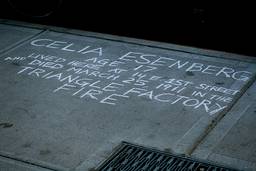More to the point, they might actually hurt efforts at union growth. When forced to conjure up an image of workers, the average American thinks of burly, middle-aged blue-collar workers: auto, mine or longshore workers circa 1950.
But today’s typical union member is more educated, more female and less white than at any time in American history. This diversity is a strength we should celebrate and make known.
As David Moberg detailed in a post here last week, a recent study by the Center for Labor and Policy Research reported that today white men make up only 38% of union members. The report went on to say that
Union workers, like the rest of the workforce, are now almost half women, older, more educated, and more racially and ethnically diverse….In the next decade, the rise of women to majority status in the labor movement and the likely continued influx of racial and ethnic minorities into unions are likely to be among the most important developments for organized labor.
The crucial question is, how will organized labor deal with these demographic changes?
One change that is important and missing from current discussions about the fate of organized labor movement is age. The union movement in America is aging fast, and not bringing new, younger members into the fold in sufficient numbers to rejuvenate itself.
Are we only a few years away from a union movemen that looks like an AARP meeting?
More importantly, support for unions has been declining in the public. Many young people do not see the value of unions, thinking of them as quaint but ineffective relics of the liberal past. Unions need to find ways to reach out to young Americans and connect with them if the movement is going to have a real chance at surviving into the 21st century.
There are many critical issues labor needs to deal with, but getting support from the youth of America must not be ignored. In recent years, business has learned the value of culture, hiring consultants to use social media and develop a cultural brand.
President Obama’s election shows the power of mobilize twenty-somethings around an idea or brand. Imagine if organized labor could tap into youth culture, making unions hip the same way Obama’s handlers made him hip! Well, a man can dream.








